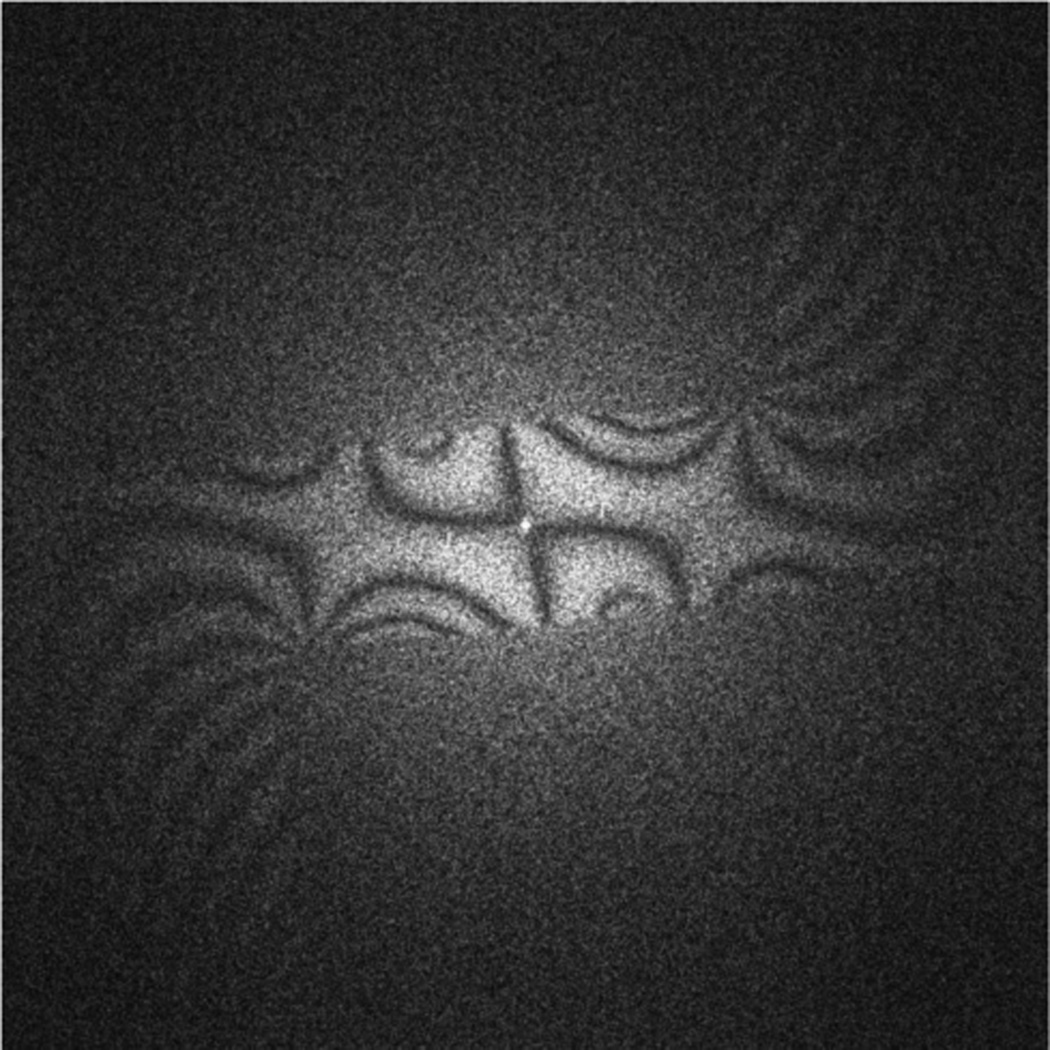Figure 4.
Representative example of the amount of distortion of the CTF that is caused by charging of the opaque portion of a hybrid dsb/ssb aperture. The test device was, in this case, simply a rectangular strip that extended from one edge to the center of a circular aperture. This device was fabricated from a 25 µm-thick foil of 5N gold, heated to a temperature of 185° C during use in an attempt to prevent the build up of hydrocarbon contamination when hit by the electron beam. The unintended result of heating the device was, as is shown here, that strong phase distortions developed along the entire front edge of the device, unlike the localized phase distortions that occur when the edge of a device is intentionally allowed to be hit (at room temperature) for 10s of seconds by the unscattered beam of the electron diffraction pattern.

